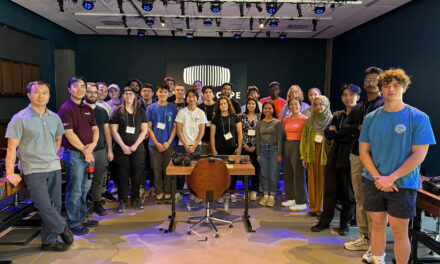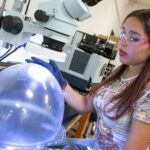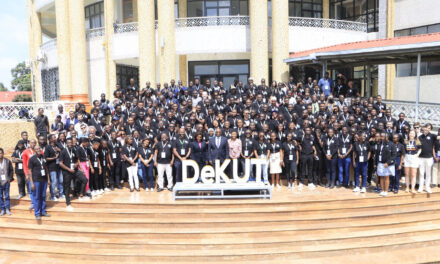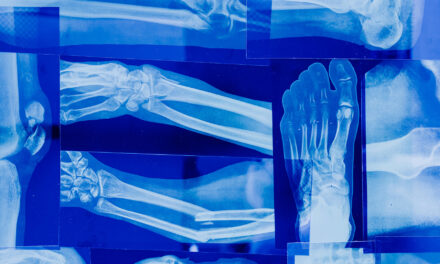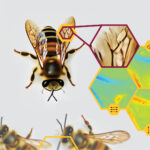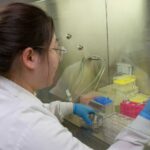
Sensor aids asthma control

N.J. Tao’s (right) patented sensor has been licensed to develop devices for monitoring and treating chronic asthma.
Managing asthma is a daily battle. Triggers ranging from air pollution to strong emotions can set off an attack, leaving a patient struggling to breathe. Although asthma patients live with the disease every day, most only see their doctors about once a year or during an acute attack.
“So what a doctor gets for information comes from one static point,” says N. J. Tao, a professor in the School of Electrical, Computer and Energy Engineering. However, health measures like blood pressure and temperature can vary widely from day to day and week to week. A single measurement taken once a year doesn’t provide a complete picture of a patient’s health, Tao says.
Tao has developed a portable sensor that can detect nitric oxide (NO) in a patient’s breath. High levels of this gas indicate that the patient’s airways are inflamed.
Existing devices that measure NO are large and expensive. Not all doctors have these machines in their offices, and they are far too expensive for patients to purchase for home use.
“What we have developed is about the size of a cell phone. It’s also much less expensive,” says Tao. “The concept we have is to provide consistent, continuous monitoring of a patient’s health status over a long period of time. So the next time I see my doctor I have one year of data to show him, to see the trend.”
In fact, patients won’t even have to wait until they visit their doctors to provide their data. The monitor can send its information directly to a cell phone or computer.
“That helps the doctor provide a more efficient, more effective treatment plan for the patient,” Tao says.
Tao’s patented sensor has been licensed to Zcube, Srl, the research venture of Italian pharmaceutical leader Zambon, Co., SpA. The licensing agreement allows Zcube to use the technology to develop and commercialize devices for monitoring and treating chronic respiratory diseases.






